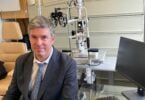Meteorologists are calling for a warmer and drier summer than usual in B.C. this year. That probably means more sunshine.
For sun worshippers, it’s good news. Direct sunlight is a significant source of Vitamin D, believed to help fight off osteoporosis, cancer and depression. And some studies show exposure to sunlight can hasten recovery from illness or injury or even bring about a greater sense of vitality and overall health.
WHO puts UV rays into same category of carcinogens as cigarettes
However, the sun’s benefits come with a caveat. The sun emits two types of ultraviolet radiation, ultraviolet A (UVA) and ultraviolet B (UVB). The World Health Association classifies both as Group 1 carcinogens. “That’s the same classification that cigarettes get,” St. Paul’s Hospital dermatologist Alexandra Kuritzky says. ”Too much sun is like smoking for your skin.”
The sun can also cause cellular and DNA damage that can lead to skin cancers and photo-aging of the skin, says Dr. Kuritzky, also a Clinical Instructor in the Department of Dermatology and Skin Science at the University of British Columbia.
The UVB wavelength that triggers the chemical reaction that produces Vitamin D is also a carcinogenic wavelength for our skin, producing UVB signature mutations that can be seen in various skin cancers, she explained. It can also cause dryness, fine lines, pigmentation and a loss of collagen and elastin, a protein that is the main constituent of elastic connective tissue.
No skin type immune from harmful UV rays
Some patients in their 60s and older with a fair degree of sun damage find that their arms bruise easily and it’s due to the loss of the structural components of the skin, a condition known as Bateman’s purpura. Although there are no serious consequences to such superficial and persistent bruising, it is a sign of chronic skin damage and may be difficult if not impossible to treat.
Although fair-skinned people are more likely to get a sunburn than those with darker skin, neither is immune from the harmful ultraviolet rays from the sun. “There really are no skin types that are exempt from skin damage,” Dr. Kuritzky says.
Dermatologists recommend a minimum SPF 30 sunscreen

In fact, the maximum protection that human skin can mount on its own is SPF (sun protection factor) 4. The Canadian Dermatology Association recommends a minimum SPF 30, a number agreed to several years ago at a meeting of dermatologists, ophthalmologists and other groups that promote public safety and cancer awareness. The three main messages from that discussion were: Enjoy the sun safely, protect your skin with a minimum SPF 30 sunscreen and protect your eyes with sunglasses or other eye wear that shields against UV rays.
Chemical or physical sunscreens?
There is a general consensus that the higher the SPF the better, but not for the reason one might think. The main argument for the bigger number is that users don’t apply the same thickness of sunscreen to their skin as is applied in the lab when sunscreens are tested for their labelled SPF. During testing, subjects are putting on two millimeters per square centimetre. “That’s a very thick coating of sunscreen,” Dr. Kuritzky says. “Studies show that most of us put on a third to a half, maybe as little as a quarter, of that thickness.” Applying half the thickness of an SPF 30 sunscreen means the effective protection is SPF 15. An SPF 60 sunscreen therefore will deliver the minimum SPF 30 protection.
Then there is the matter of which sunscreen to choose. Chemical sunscreens filter UV radiation by absorbing it and converting it to heat energy. They may have ingredients such as octisalate, octocrylene, oxybenzone or avobenzone. Physical sunscreens, containing zinc or titanium oxide or both, reflect and scatter the light.
Jury is out on harm from sunscreen absorption but one thing is clear: Sun’s UV rays cause cancer
Both types of sunscreen are effective and considered safe but the U.S. Food and Drug Administration raised some controversy recently with a small study of 24 volunteers to determine if absorption of chemicals into the blood exceeded the threshold the FDA set to warrant further investigation into potential negative effects. Although the level did exceed the threshold from day one and accumulated over the study’s four days, it is unclear whether this represents any risk.
“That’s the big question and we don’t really know,” Dr. Kuritzky said. “What we do know is that chemical sunscreens have been used for decades with no detectable biological signals.”
While there may be uncertainty about the absorption of chemical sunscreens, there is absolute certainty that UV rays from the sun cause cancer. Dr. Kuritzky acknowledges that news of the study’s findings may push more people to physical sunscreens but insists that sunscreens have prevented many cases of cancer and there is no reason to abandon them.
Editor’s note, May 2024: Dr. Kuritzky is no longer with Providence. She is now Medical Director at DERM Lab.





